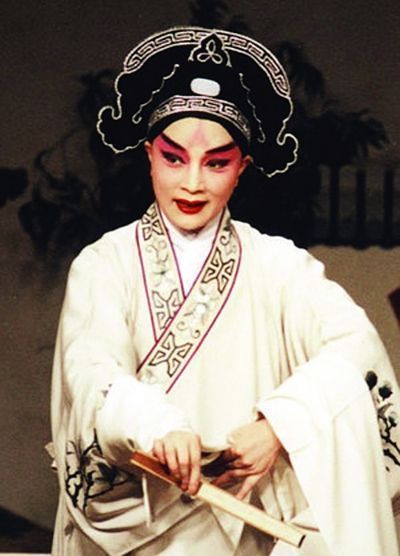 Renowned veteran Kunqu Opera artist Shi Xiaomei (file photo)
Renowned veteran Kunqu Opera artist Shi Xiaomei (file photo)
In 2001, when UNESCO proclaimed Kunqu Opera an Intangible Cultural Heritage of Humanity, a newspaper editor in Hong Kong asked Cheng Pei-kai, the director of the Chinese Civilisation Centre at City University of Hong Kong, "What is Kunqu Opera?" Cheng was stunned for a moment. He realized that in the whole of Hong Kong, there were just a few people who knew what Kunqu Opera is.
Developed in the early Ming Dynasty (1368-1644) from the regional music of Kunshan, Jiangsu Province, Kunqu Opera dominated Chinese theater for hundreds of years, influencing other theatrical forms like Peking Opera, until its decline in the 19th century.
"I found that traditional Chinese opera forms, including Kunqu, haven't received enough discussion or attention from Chinese academia," Cheng said. "Without academic research and documentation, traditional operas will struggle to survive."
Cheng told the Global Times that in his opinion, "cultural heritage" is not dead, but a living thing, which should be inherited and passed down from generation to generation, otherwise, any heritage will just become meaningless.
Therefore, in 2008, when Yeh Chao-hsin, a Kunqu Opera lover in Hong Kong, told Cheng about his project, he was eager to get involved. They were joined by Wang Shiyu, a senior Kunqu Opera performer from Jiangsu Province, and Cai Shaohua, the director of the Suzhou Kunqu Opera Theatre of Jiangsu Province.
Yeh put nearly 6 million yuan ($979,638) of his own money into the project and invited 29 senior Kunqu Opera performers, all over 70 years old, from around the country, embracing the five major opera roles of sheng, dan, jing, mo and chou, to give oral accounts of 109 classic Kunqu Opera plays. Every performer chose several plays, each recorded separately, to demonstrate and explain the traditions, techniques and gestures that make up Kunqu.
